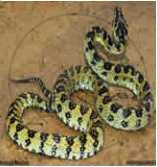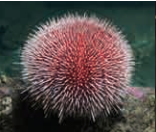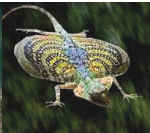Advertisements
Advertisements
प्रश्न
Identify the animal given in the picture and write features of its phylum/class.

उत्तर
The given animal is Tomopteris. It belongs to the phylum Annelida.
For features of Annelida,
- Animals belonging to the phylum Annelida are worms with annuli or rings.
- They are bilaterally symmetrical true coelomates showing metamerically segmented soft, elongated and cylindrical body.
- Digestive system is complete with a mouth and anus at opposite ends of the body.
- Locomotory organs are setae, parapodia, or suckers. They have well-developed layers of circular and longitudinal muscles which help in the movement of the body.
- Excretory organs are nephridia which is a characteristic feature of annelids.
- Respiration takes place through the body surface. Circulatory system is of a closed type. Haemoglobin is dissolved in plasma.
- The nervous system is in the form of nerve rings and ganglionated nerve cords.
- The reproductive system well developed. Animals are mostly hermaphrodites. Few are unisexual.
- Leech (a sanguivorous annelid), Nereis, earthworm, Aphrodite, etc. are examples of Annelida.
APPEARS IN
संबंधित प्रश्न
The circulatory system has evolved from open to closed type in Animal kingdom. Which Phylum can be called first to represents closed circulation?
Answer the following question.
Crab and Snail both have a protective covering. Is it made up of the same material?
Answer the following question.
Fish and snake both have scales. How do these scales differ from each other?
Answer the following question.
Lower Phyla like Arthropods and Cnidarians show metamorphosis. Is it also found in any class of Phylum Chordata?
Draw a neat labelled diagram.
Sycon
Draw a neat labelled diagram.
Catla
Identify the animal given in the picture and write features of its phylum/class.

Identify the animal given in the picture and write features of its phylum/class.

Identify the animal given in the picture and write features of its phylum/class.

Identify the animal given in the picture and write features of its phylum/class.

